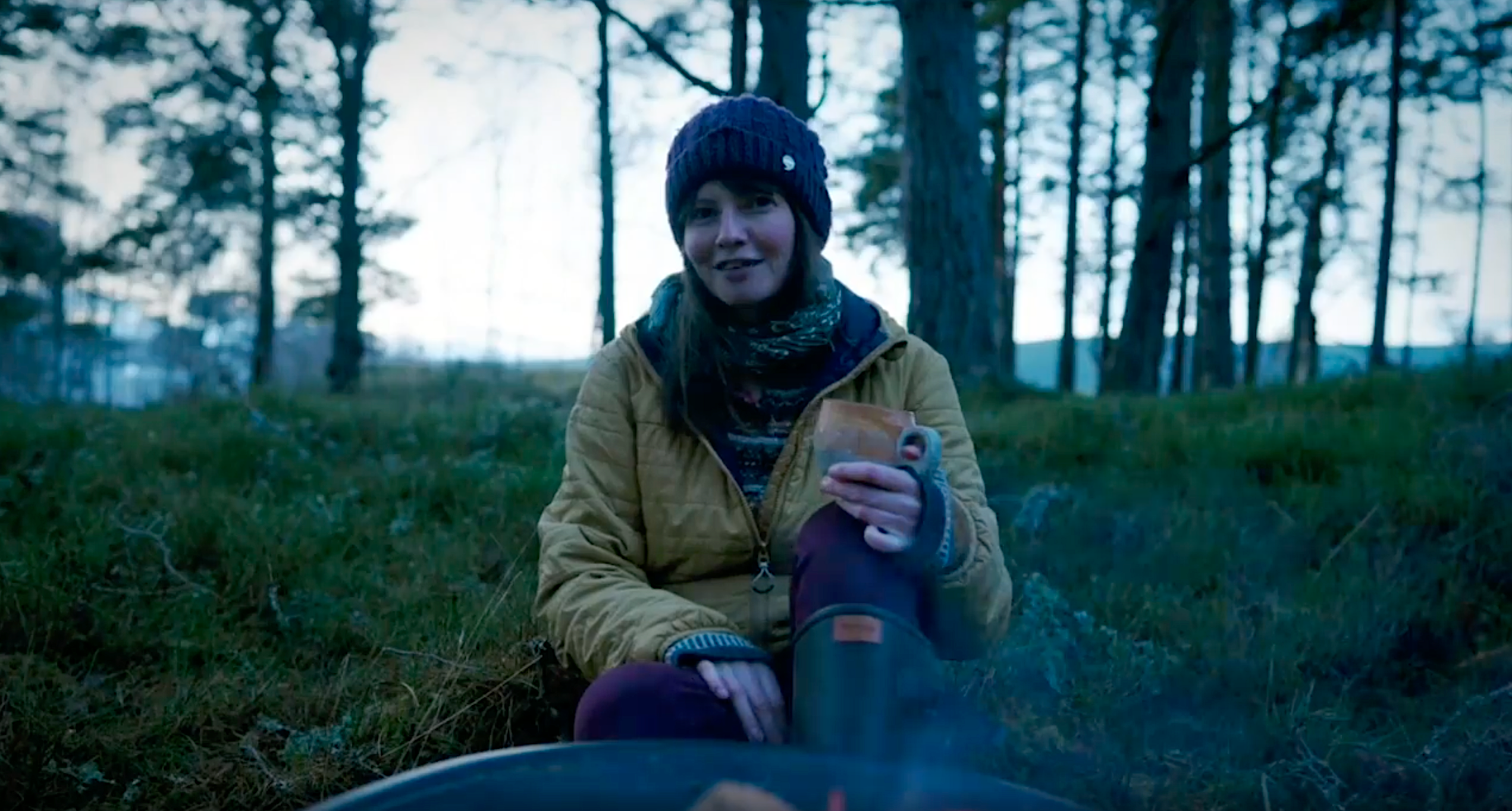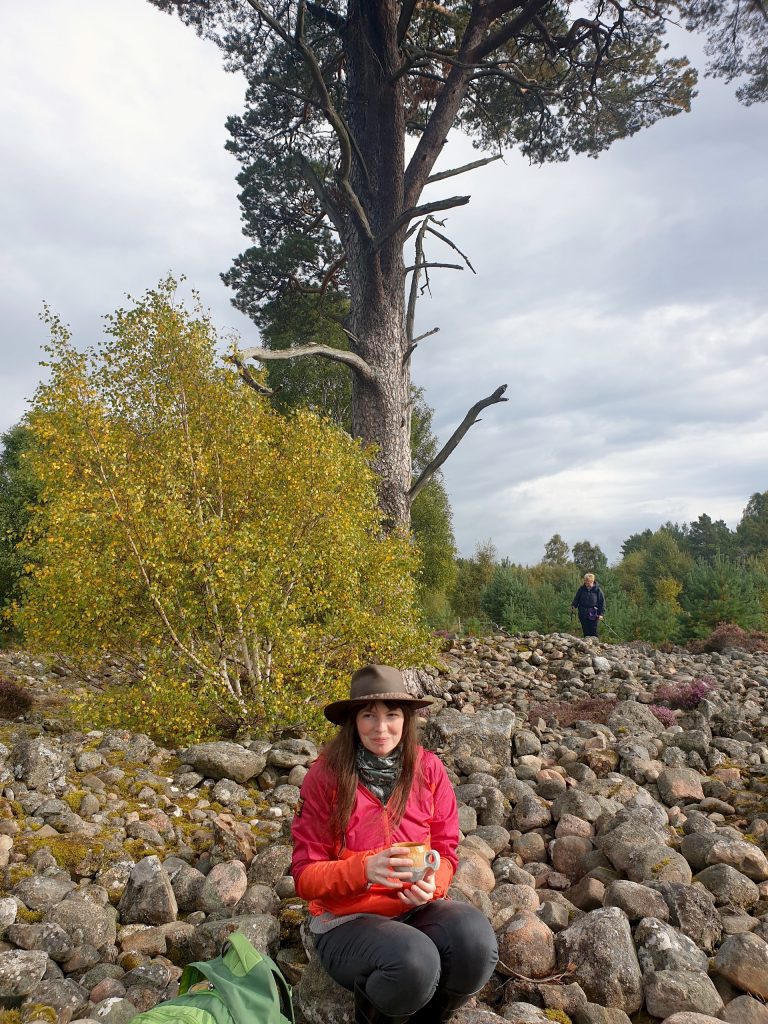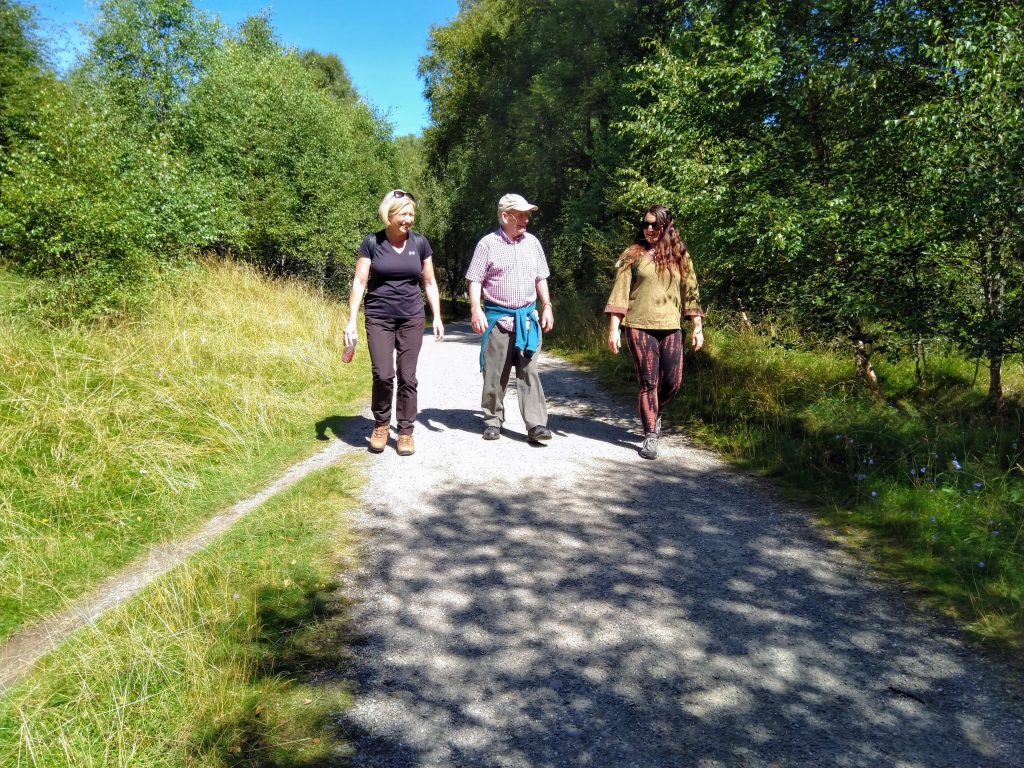Strathspey Storywalks and the Speyside Way
More than being a beautiful track towards the sea, the Speyside Way is full of fascinating archaeological finds, locations of key historical events and of course lots of folklore! Sarah Hobbs of Strathspey Storywalks tells us some of her favourite stories from special places along the Way, as part of our month-long spotlight on the route.
About 10 minutes off the Speyside Way on Granish Moor just north of Aviemore, lies the Loch Nan Carraigean cairn. As its name suggests, it’s next to a wee loch, and this impressive 5,000-year-old Neolithic burial cairn also has a circle of surrounding standing stones. Most of the standing stones are now missing (there are stories about frightened cattle not wanting to enter a croft building made with one of these stones…) and the cairn is aligned to sunset on the winter solstice, the most common alignment for cairns across Scotland and Ireland.
This is similar to its better-known cousin, the Clava Cairns near Inverness – but the unassuming Loch Nan Carraigean cairn was possibly more important, at least according to folkloric tradition!
It was at the Loch Nan Carraigean cairn that the kings of Pictland were said to be selected and crowned around 2,000 years ago, in a special ceremony where druids raised three spirits which then gave guidance. It may also be true that later, Kings of Scotland also visited the cairn, seeking advice from spirits – King Macbeth was said to visit Granish Moor to seek guidance from ‘three wise women who lived by the shores of a loch.’ Well! Rather than being three actual women, it may have been that the spirit-raising ceremony continued for many more hundreds of years.
There was much secrecy around these ceremonies, and the knowledge of them was entrusted to just a few families in the area and passed down from generation to generation over 2,000 years. In the 1960s, the folklorist Otta Swire who grew up in Kingussie noted down what details she could from her granny’s gardener, whose own granny knew something of the ceremonies.
Local people at that time, and the centuries before, knew the cairn as a Druidic temple. It has never been excavated, and is a Scheduled Protected Monument, so if you do visit, please keep everything as it is!
As you carry on along the Speyside Way over Granish Moor, you’ll pass the find spot of a Bronze Age axehead, the location where escaping Jacobites from the Battle of Cromdale were killed, and the woods where a wily giant lives…
I love the Speyside Way for precisely this variety, of tales and folk history told over thousands of years. The variety of landscapes is special too: the wiggly bits in birch heath near Kinrara feel so different to the open spaces (and regenerating forest) of Granish Moor.
A journey along the Speyside Way can be so much more than passing through the landscape: delving into the layers of Gaelic culture, history, nature and stories provides a richer experience. It changes perspectives, and this is what I love about exploring the outdoors, quietly and slowly.
Find out more about Strathspey Storywalks and book a walk with Sarah at www.storywalks.scot




